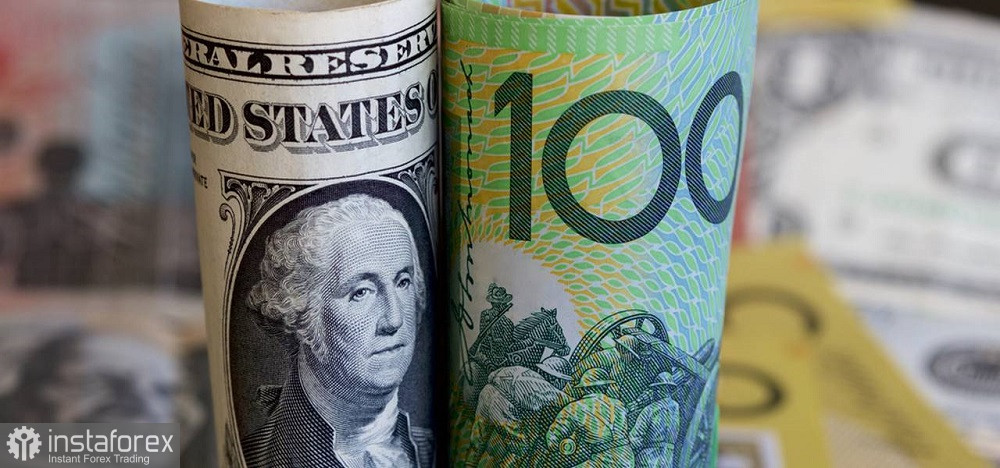At the beginning of the new trading week, the Australian dollar tried to develop a bullish correction against the US dollar, which was due solely to the decline in the US dollar index. But this is just price noise amid an almost empty economic calendar on Monday. The high-profile events of last week have been left behind, and now traders will have to trade in conditions of information drought for several weeks. The traditional pre-holiday bliss is coming.
However, there is still one source of information for the aussie, which in the current conditions can provoke increased volatility for the pair. I am talking about the minutes of the Reserve Bank of Australia's last meeting this year, which is set to be released on Tuesday, December 20.

Let me remind you that following the results of this meeting, the RBA expectedly increased the interest rate by 25 basis points (fully justifying experts' forecast), signaling a further rate hike to curb inflation, which, according to the central bank, remains at a high level. At the same time, RBA Governor Philip Lowe ignored early signs indicating that inflation in Australia could reach peak values in the third quarter, after which it will begin to slow down. At the final press conference, he refrained from providing any signals in the context of a possible pause in monetary tightening.
At the same time, the tone of the accompanying statement still suggests that the RBA does not exclude all options for the development of events. The central bank excluded from the text of the final communique a reference to its main forecast for the growth of inflation (consumer price index) for the next year. In addition, the central bank excluded projections on the labor market in 2023. Such unexpected gaps indicate that the RBA is waiting for more recent macro data that will allow it to decide on further actions. In other words, the RBA is not ready to signal a possible pause until the release of a report on inflation growth in Australia in the fourth quarter of 2022. Therefore, at the December meeting, the RBA actually repeated the scenario of the November meeting and did not rush things with the announcement of dovish decisions.
However, the minutes of the last RBA meeting, so to speak, lift the veil of obscurity. If the document supports the basic market forecast, according to which the Australian central bank will soon take a break, the aussie will be under extreme pressure, even against the greenback. Even if such a scenario is discussed in the context of the first half of next year, bulls will still react negatively to such a stance. The fact that this will happen somewhat later than previously expected will not matter much for the foreign exchange market. In this case, the current monetary policy of the RBA will not support the Australian dollar: an upcoming pause will loom on the horizon.
The US dollar acts as a lifeline, allowing bulls to organize corrective counterattacks. But in general, the situation looks like a stalemate for the bulls. Take a look at the weekly AUD/USD chart: for 6 weeks – from mid–October to mid-November - the aussie has shown a pronounced uptrend, which was mainly due to the greenback's weakness. But then the upward momentum faded: traders got bogged down in the 0.6800-0.6900 range. Bulls have repeatedly tried to approach the limits of the 69th figure, but in vain. The last attempt, which was made last week (ahead of the Federal Reserve meeting), also ended in failure.
As a result, the bears intercepted the initiative: they managed to pull the pair into the price range of 0.6650-0.6800, within which it is now being traded. However, this price limit is a temporary haven for both bulls and bears. So, in order to develop a downtrend, bears need to cross the support level of 0.6650: at this price point, the average line of the Bollinger Bands indicator coincides with the Kijun-sen line on the weekly chart. In turn, bulls need to cross the resistance level of 0.6790 (the Tenkan-sen line on the daily chart) to return to the price range of 0.6800-0.6900.
In my opinion, the minutes of the December RBA meeting are able to push the pair out of the current price range – but only if the document contains rhetoric that differs from the rhetoric of the accompanying statement and/or Philip Lowe.
At the moment, it is better to take a wait-and-see attitude. Short positions will be relevant when the bears cross the 0.6650 mark (the next bearish target will be located at 0.6450 – this is the upper limit of the Kumo cloud on the D1 timeframe). You can consider long positions in case the pair settles above the 0.6800 mark (in this case, bulls will try to approach the limits of the 69th figure again). It is likely that the RBA minutes will provoke the corresponding volatility, the only question is whether it is in favor of the aussie or against it.
 English
English 
 Русский
Русский Bahasa Indonesia
Bahasa Indonesia Bahasa Malay
Bahasa Malay ไทย
ไทย Español
Español Deutsch
Deutsch Български
Български Français
Français Tiếng Việt
Tiếng Việt 中文
中文 বাংলা
বাংলা हिन्दी
हिन्दी Čeština
Čeština Українська
Українська Română
Română

